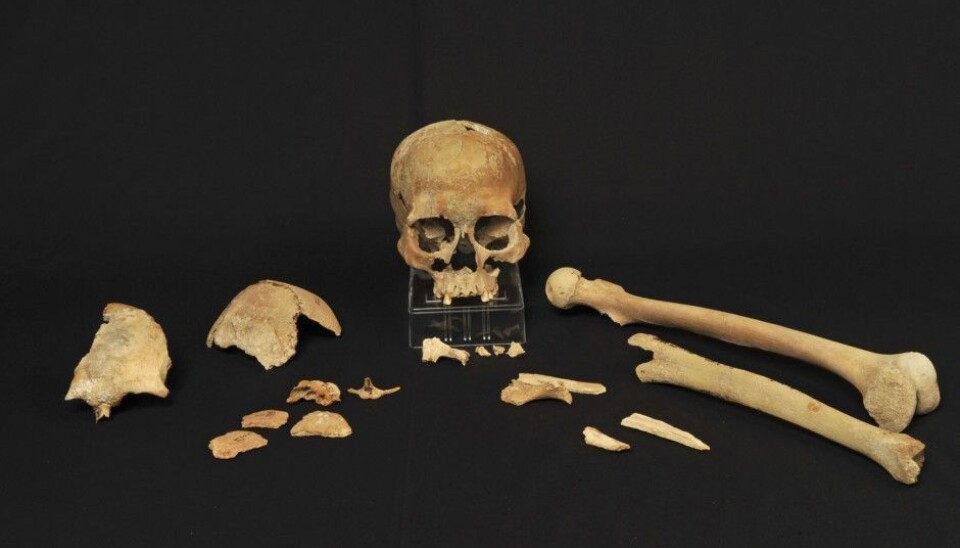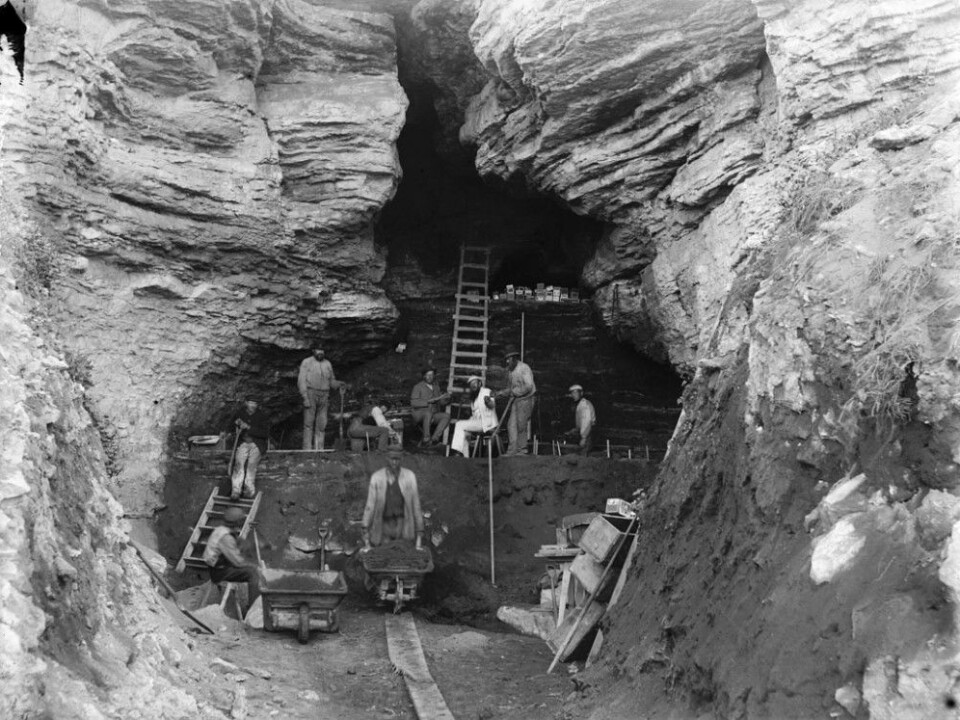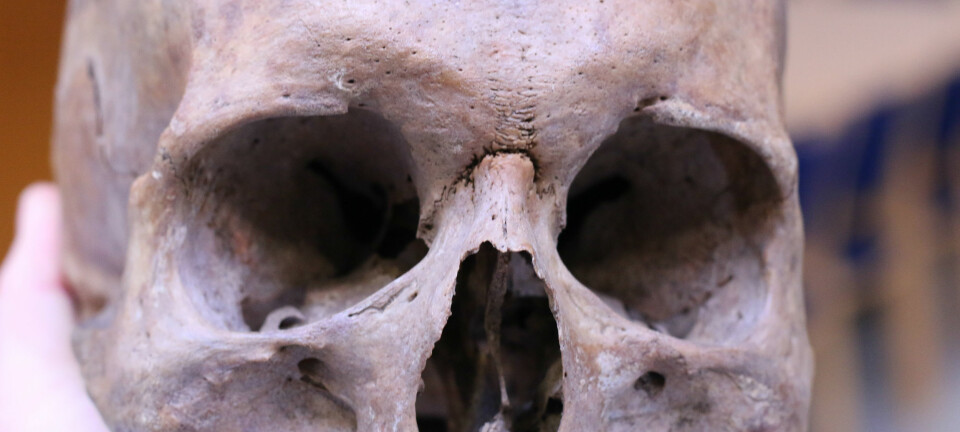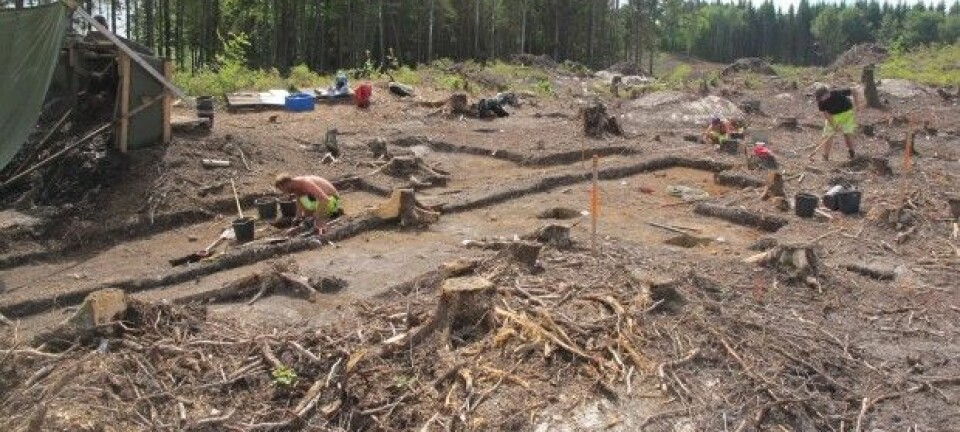
First Scandinavians came from north and south
Scandinavia has been a melting pot of cultures ever since the first people arrived after the last ice age, new DNA analyses show.
People started settling in Scandinavia and calling it home soon after the region emerged out of the icy grip of the last ice age around 12,000 years ago. Archaeological finds show that people lived in the area 11,700 years ago. But researchers have long wondered who these settlers were, and where they had come from.
Many of the tools they left behind suggested that the first Scandinavians came from the southwest, and migrated northward along Norway’s long and winding coast.
But that was not the whole story.
Other tools, suspiciously similar to technology from the east, were discovered in northern Norway. This left archaeologists wondering whether the first Scandinavians had contact with different groups, or whether they had in fact come from the east, in what is today Russia.

A new study of Mesolithic – or Stone Age – DNA suggests the latter.
“The genetic patterns show how Scandinavia was colonised after the ice age, both by a migration from south west Europe, directly up to Scandinavia, and soon after by a migration from what is today Russia, which went north of the ice cap and down along the Atlantic coast,” says co-author Professor Mattias Jakobsson, a geneticist from Uppsala University, Sweden, speaking to Videnskab.dk.
The results are published in the scientific journal PLOS Biology.
First Scandinavians migrated along two routes
Jakobsson, together with colleagues from Norway analysed fossil DNA from seven of the oldest human remains discovered in Scandinavia.
Four specimens came from Gotland and Stora Karlsö in Sweden, and were first excavated in the 1800s and 1900s.
The other remains were discovered in Norway: Two were newly discovered during an underwater excavation at Hummerviken in western Norway. And the last specimen was a part of a jawbone, discovered in a cliff section a few years ago in Steigen, northern Norway. It is dated to 6,000 years old. All other specimens are between 8,000 and 9,500 years old.
Jakobsson and colleagues compared these specimens with genetic profiles previously mapped from the same period from Sweden and Europe.
The results showed that DNA from skeletons in northern and western Scandinavia most closely resembled DNA of people in the northeast, while skeletons from south and east Scandinavia most closely matched DNA from southwest Europe.
This suggests that Scandinavia was actually populated along two routes.
“It’s interesting and an important result because it confirms that Scandinavia was colonised early and from both east and west, something that archaeologists have long discussed,” says Kristian Kristiansen, an archaeologist from the University of Gothenburg, Sweden speaking to Videnskab.dk.
Kristiansen was not involved in the new study but is an expert in tracing Bronze Age migrations.
Read More: Genetics confirm: Migrants brought farming to the Mediterranean
DNA evidence supports archaeological hypothesis
Christopher Prescott, Head of Department at the Norwegian Institute in Rome, isn’t so surprised by the results. The DNA analyses confirm previous archaeological findings in the region, although the focus on migrations from the south had perhaps dominated, he says.
"This study confirms that Europe is important, but also that a parallel influence from the east and towards northern Scandinavia exists,” says Prescott, who was not involved in the new study. He is an archaeologist and an expert in The new stone age and The bronze age.
The results confirm that northern countries were not an Arctic dead end, but could have been a melting pot of people from continental Europe and the Urals, who brought new technologies like ceramics from as far away as China.
However, the new results are not definitive, as seven skeletons, widely spread across distance and time, offer limited data to work with, says Prescott.
Read More: Why Danish Vikings moved to England
Too early to draw firm conclusions
Prescott remains cautious at this early stage and would like to see more analyses from skeletons around the region to get a fuller picture.
"Typically you start with a few skeletons, and then everything seems crystal clear. But as you uncover more data, the story becomes more complicated,” he says.
So it’s probably too early to conclude too much yet.
The researchers, for example, discovered possible environmental adaptations in the genes of the archaic humans. They found that the people from Scandinavia had traces of certain genomic patterns, such as high frequencies of light complexion genetic variants and genes that may be linked to cold adaptation in the ancient Scandinavian skeletons
It is likely that people have developed these types of environmental adaptations, says Prescott. However, this one study is too small to conclude anything just yet.
“They don’t have enough data, but it would be interesting to investigate," he says.
Read More: Genetics have remained constant for 8,000 years in world’s melting pot
Much better techniques for genetic analyses now available
Archaeologist and Stone Age expert, Mikkel Sørensen from the University of Copenhagen, Denmark, is more positive. In his 2013 study, he concluded that Scandinavia was probably populated from both the south and the northeast, as the new study confirms.
“It’s an especially interesting discovery and it strengthens the archaeological hypotheses,” says Sørensen, speaking to Videnskab.dk.
“It is the first study to use genetics to discuss Scandinavia’s first immigrants, but it is a part of a larger breakthrough in fossil DNA, which over the past ten years has published better quality studies of our genetic origins,” he says.
Prescott points out that previous issues with DNA analyses have been resolved—they now cost relatively little and it is increasingly possible to analyse fragmented material.
Read More: Ancient grain reveals the development of the earliest cities
Norway is a prime spot for archaeology
Compared to central Europe, many areas in Norway have remained untouched, especially in coastal basins and brackish waters with fine-grained seabed sediments.
In Northern Scandinavia, the land has rebounded more than the sea level has risen since the last ice age, steadily lowering the shoreline. Since the early peoples most often settled near the water’s edge, the result has been that settlements from different eras weren’t built on top of each other, but are nicely spaced out.
"Some of the best material in Northern Europe has been found in Norway," Prescott said.
And with more exploration and a little luck, researchers hope to find even more old skeletons that can shed light on unknown parts of their story.
One question that might arise on a cold January day is why anyone would choose to settle in this frozen north country at all.
Read More: Archaeologist: Excavate more before climate change destroys our cultural heritage
People have feet
Prescott laughs. He’s wondered the same thing.
The truth is that we don’t quite know. Perhaps changes in climate or in the ocean currents made the areas especially rich in food? Power struggles between people and tribes probably played a role. And maybe youngsters just wanted to get out from under their parents’ wings.
But perhaps it’s mostly about the innate human urge to be on the go, simply to explore new opportunities, Prescott says.
It’s a fact that human migration exploded towards the end of the last ice age, and that people then found their way to almost every corner of the planet. Previously ice-covered areas in Scandinavia opened up for people to settle in, and they grabbed the chance.
"Traditionally, people have roots," says Prescott.
"But in recent years, I've become more and more convinced that it would be more accurate to say that people have feet.”
---------------
Read more in the original articles in Danish at Videnskab.dk and Norwegian at Forskning.no.
Scientific links
External links
- Mattias Jakobsson's profile
- Kristian Kristiansen's profile
- Mikkel Sørensen's profile
- Christopher Prescott's profile








